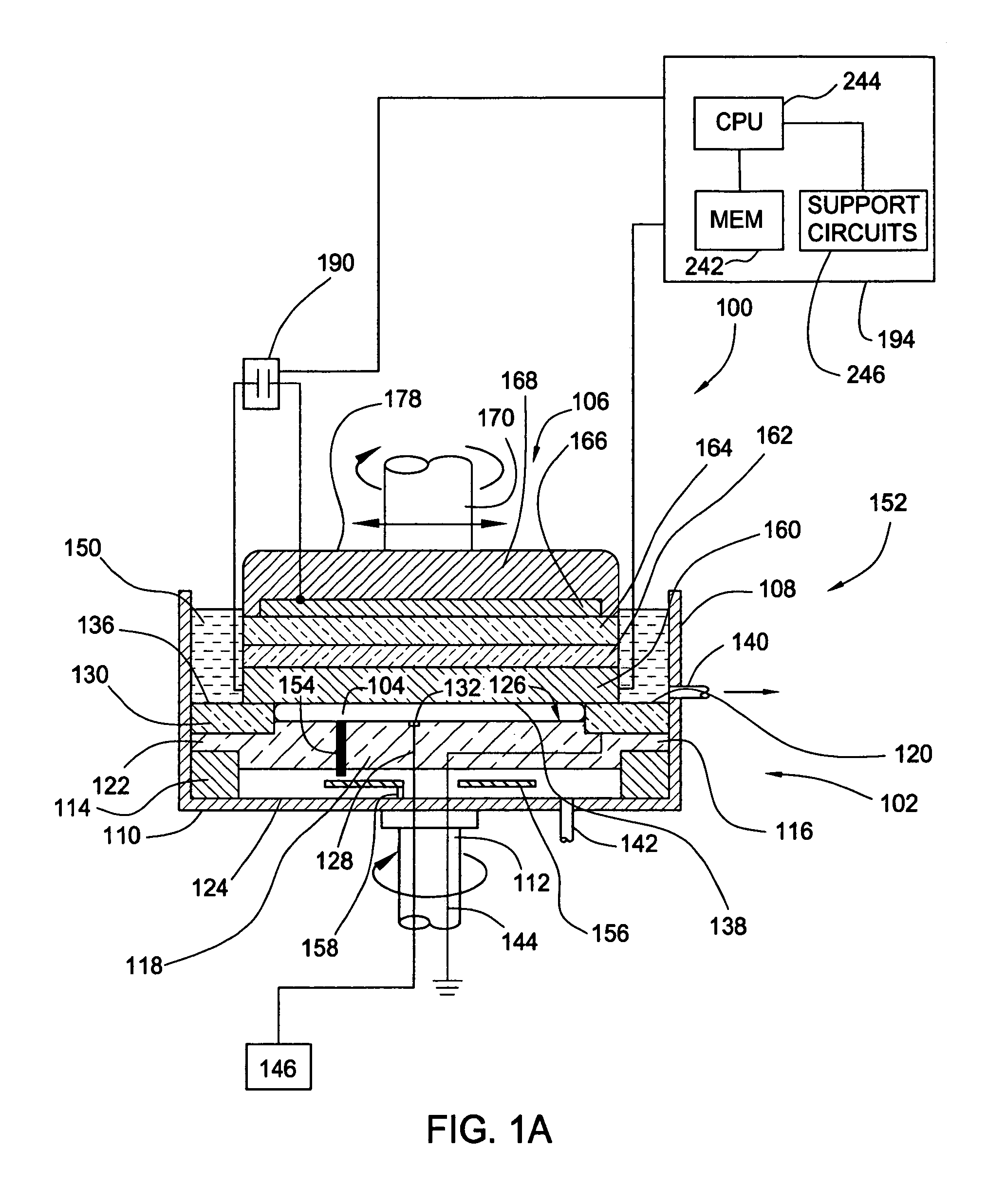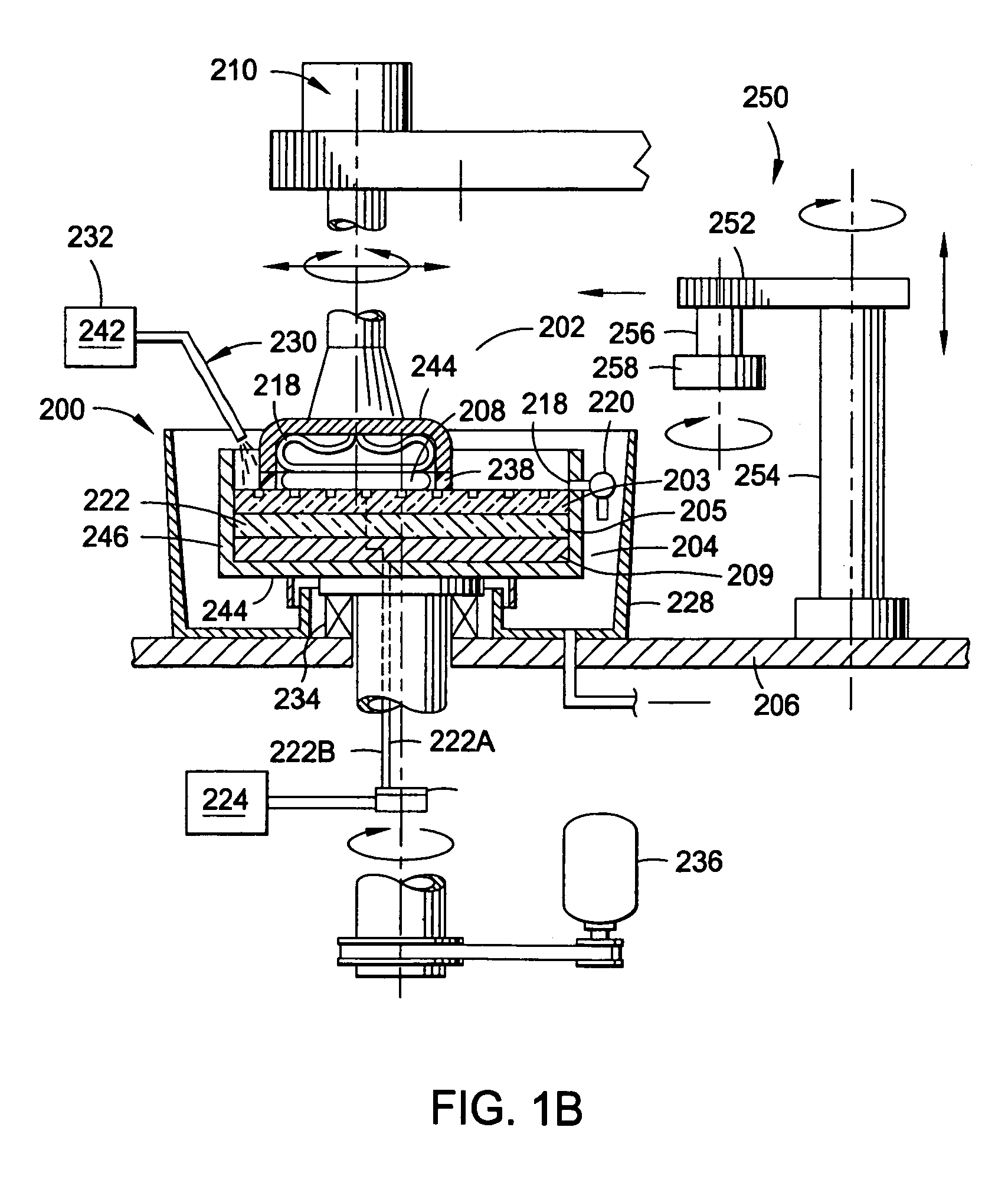Process control in electrochemically assisted planarization
a technology of electrochemically assisted planarization and process control, which is applied in the direction of grinding machine components, manufacturing tools, lapping machines, etc., can solve the problems of difficult to achieve effective removal of copper material from the substrate surface and the planarity of the substrate surface, and the failure of ecmp systems to provide an ecmp method for polishing the substrate surfa
- Summary
- Abstract
- Description
- Claims
- Application Information
AI Technical Summary
Benefits of technology
Problems solved by technology
Method used
Image
Examples
Embodiment Construction
[0028]FIG. 1A depicts a sectional view of one embodiment of a process cell 100 in which at least one or more processes including plating and polishing, or combinations thereof may be practiced. The process cell 100 may be used to practice electrochemical mechanical polishing (ECMP). ECMP should be broadly construed and includes, but is not limited to, planarizing a substrate by the application of electrochemical activity or a combination of both electrochemical and mechanical activity to remove material from a substrate surface. The process cell 100 may be used to polish a substrate through an anodic dissolution process. In an anodic dissolution process, an anodic bias is applied to the substrate, directly or indirectly, resulting in removal of conductive material from a substrate surface into a surrounding electrolyte. The process cell 100 may also be used to electrochemically deposit material onto a substrate. The electrochemical deposition may be concurrent with the application o...
PUM
 Login to View More
Login to View More Abstract
Description
Claims
Application Information
 Login to View More
Login to View More - R&D
- Intellectual Property
- Life Sciences
- Materials
- Tech Scout
- Unparalleled Data Quality
- Higher Quality Content
- 60% Fewer Hallucinations
Browse by: Latest US Patents, China's latest patents, Technical Efficacy Thesaurus, Application Domain, Technology Topic, Popular Technical Reports.
© 2025 PatSnap. All rights reserved.Legal|Privacy policy|Modern Slavery Act Transparency Statement|Sitemap|About US| Contact US: help@patsnap.com



